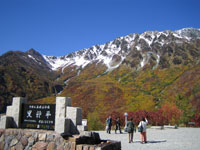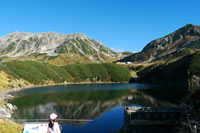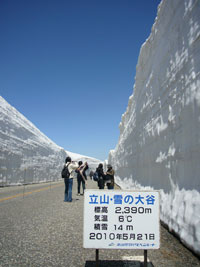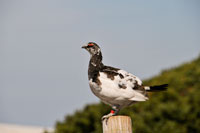
Ogisawa
Ogisawa is the entrance to the Alpine Route from the Nagano side. The spacious terminal has a restaurant and gift shop.

Kurobe Dam
Kurobe Dam’s size puts it as a world-class arch-style overflow-type dam. And at 186 meters in height, it is the highest dam in Japan.
Over 10 tons of water per second blast out of the dam’s drainage in a mist, which makes this a must-see tourism site. The close proximity of newly constructed viewing area to the outflow makes this an extremely appealing place for viewing the spectacle.
Dam Outflow Viewing Period: June 26th to October 15th

Kurobedaira
There is a garden as you exit the station, surrounded by the scenic mountain range and Kurobeko (lake). The botanical garden displays high altitude plants.

Daikanbo
This station is built as if it were protruding from the cliff. It can be reached from Kurobe Dam by trolley bus and ropeway. The amazing panoramic view from the rooftop observatory captures the notable beauty of the Alpine Route. From late September to mid-October, Lake Kurobe surrounded by crimson fall foliage can be overlooked.

Murodo
This is the highest point on the Tateyama Kurobe Alpine Route (2,500 m). With luck, one might encounter a family of raicho (ptarmigans). Also, one can soak in Japan’s highest elevation hot springs.

Snow Corridor
Tateyama is one of the world’s heaviest snowfall areas, where depth of accumulated snow averages seven meters. Here, the depth reaches 20 meters in years of heavy snowfall, which is equivalent to a ten-story building. “Snow Corridor Walk” allows tourists to enjoy a 500-meter walk through the impressive snow walls. The walls decrease gradually from the opening in mid-April and can be observed until the end of June. Also, activities such as sledding can be enjoyed.

Raicho (Ptarmigans)
Ptarmigans live only in mountainous areas yet are not afraid of humans because they were once revered as messengers from god. Furthermore, they are designated as a Special National Treasure because of their unique features, such as changing the color of their feathers completely between summer and winter, and surviving through the ice age.

Hiking
There are a number of hiking courses tourists can enjoy in the Tateyama Kurobe Alpine Route other than Murodo; Midagahara, the expansive marsh located at about 2,000 meters in elevation, as well as Bijodaira, a virgin forest of Japanese beech and giant cedar over 1,000 years old, not to mention Tateyama (3,003 m) for mountain climbing.
For more information, click here
It is also possible to go on a challenging hike to mountains such as Mt. Tsurugi to the north and Mt. Yakushi to the south of Murodo.

